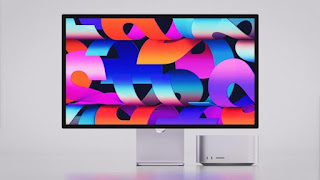When chips are scarce like now, Apple even released unusual products. Namely a monitor equipped with a system on a chip (SoC) for mobile phones. What do you do?
The monitor in question is Studio Display, which was released alongside the iPhone SE 5G and Mac Studio. This monitor, starting at USD 1,599, has a 5K resolution and a 27-inch panel size.
However, Studio Display is not just a monitor. Because there's a 12MP webcam that promises to have the same image quality as the front camera on the iPad, which means -- maybe -- it'll be better than most of the 1080p webcams used by the newer Mac lineup.
Well, this is where the function of the A13 Bionic chip embedded in Studio Display is. According to Apple, this SoC will be in charge of taking care of features such as Center Stage (the ultrawide web cam will adjust the framing to the position and number of people in the frame), Spatial Audio, and Hey Siri.
The A13 Bionic is also responsible for optimizing the images generated from the webcam, like computational photography on mobile phones. Finally, this SoC also takes care of Dolby Atmos audio processing, which is claimed to be able to provide a three-dimensional soundstage from the speakers in the Studio Display.
However, this A13 Bionic is the chip used in all iPhone 11 series, 2nd generation iPhone SE and 9th generation iPad. This SoC is capable of performing 1 trillion operations per second, and has two fast cores.
Yes, this is a SoC that can run a phone smoothly. Even today. Feels redundant for a monitor, especially for the features described above.
It's just that Apple in a statement to The Verge stated that Studio Display will later be able to get a firmware update when connected to MacOS 12.3 and above. So, theoretically, it's not impossible that this A13 Bionic can get additional assignments, for new features maybe?


